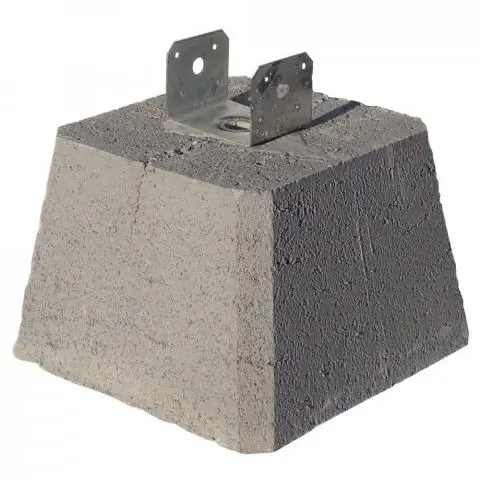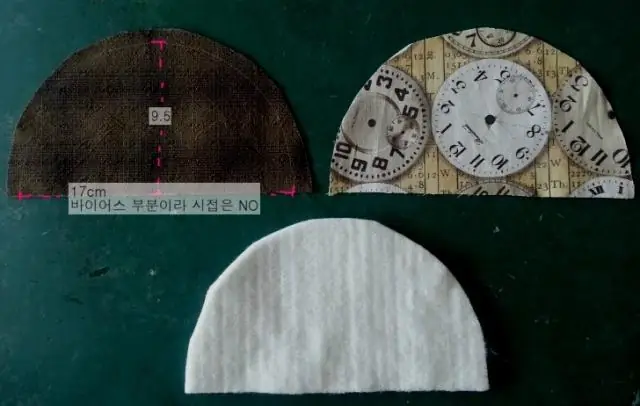
Table of contents:
- Author Bailey Albertson [email protected].
- Public 2024-01-17 22:26.
- Last modified 2025-01-23 12:41.
DIY roman blinds for your home

Coziness in the house is created with the help of many details and accessories, including curtains. Thanks to them, you can give your interior a unique style and elegance. Roman shades, both austere and graceful, are becoming increasingly popular in home decor. And although their design seems complicated due to some technical features, making them yourself is very simple.
Content
-
1 Roman blind in the interior: features and differences
1.1 Photo gallery of Roman curtains
-
2 Manufacturing from A to Z
- 2.1 Choosing fabrics
- 2.2 Materials and tools required
- 2.3 Method of fixing the finished product
- 2.4 Cutting
- 2.5 Sewing and assembly
- 3 Video: we sew a Roman blind
Roman blinds in the interior: features and differences
Although the design of Roman curtains was invented in antiquity and has survived to this day unchanged, it still looks modern and appropriate in any interior. In a room with small, narrow windows, such curtains look laconic, successfully playing with the space. On a large window, a roman blind can become a visual continuation of the wall or an element of its decor; it will not overload the interior.

Roman blind will perfectly fit into the interior of any room, especially the kitchen
The simplicity of making a Roman shade is based on the fact that it is made according to the principle of a sail on old ships: a straight piece of fabric without draperies rises and falls, gathering like an accordion. That is, you need quite a bit of fabric, and its pattern will be fully visible. Even buying expensive designer textiles for roman blinds will cost you relatively little compared to curtains, for example.
You can hang a ready-made Roman blind either in the window opening or on a wall or ceiling cornice. The most important thing is to choose the right color and pattern that matches the style of the room interior. And the design mechanism will allow you to create twilight in the room or fill it with sunlight.
Photogallery of Roman curtains
-

Different types of curtains -
The combination of different types of curtains and types of fabrics - an option for the dining room
-

Roman blind in the dining room - Decoration with a Roman blind of a window with a bay window
-

Roman blinds made of translucent fabric - Translucent Roman blinds in the color of mobiles and accessories in the kitchen
-

Bathroom - Roman blind in the interior of the bathroom
-

Country style roman blind - Roman blind as a decorative element in country style
-

Roman blind in the kitchen -
Floral motives
Manufacturing from A to Z
Although sewing Roman blinds is a relatively easy task, it also has its own characteristics and secrets. The result directly depends on how you prepare for work. In particular, it is very important to choose the right fabric for both aesthetic and practical reasons.
Choosing fabrics
Almost any fabric is suitable for Roman blinds - from curtains to tulle. But most often they use dense material: it keeps its shape well, emphasizes the folds in the assembled form, and when the curtain is lowered, it fully demonstrates the texture and pattern.
- If you want the rooms to be protected from prying eyes from the outside, and at the same time filled with sunlight, translucent fabrics are suitable for a Roman shade.
- Dense opaque black out materials will help to create complete shading in the room. They are processed from the seamy side with a special impregnation, which does not allow the fabric to burn out in the light. These curtains will also protect your furniture, wallpaper and interior items from the sun.
- When choosing a fabric for a Roman shade in the kitchen, keep in mind that even a powerful hood in this room will not protect against soot, steam and odors. Choose a material that is moisture and dirt repellent. Such fabric should be easy to clean, not afraid of frequent washings and retain an attractive appearance for a long time. The best option is synthetic fabrics.
- If naturalness and naturalness are of fundamental importance to you, pay attention to blended and combined fabrics. The addition of a small amount of synthetic thread to silk, linen or cotton makes the material practical, easy to clean and durable.
- There are two ways to sew Roman blinds: double and single. In the first case, dense colored fabrics are used: so they hardly fade in the sun. For the second option, light fabrics with a white back and prints or thin translucent materials (patterned organza, linen veil) are applicable.
- Choose texture, pattern and color with special care. Plain fabrics are considered universal: they are perfect for any interior. Gastronomic or floral motifs go well with rustic or country styles. Design in an avant-garde or modern style is complemented by geometric shapes or abstract images.
Required materials and tools
So you've found the right fabric. Now let's start sewing. Let's look at the process using a very simple design as an example, the components for which you can easily find in any hardware store. You will need:
- a piece of dense fabric;
- a bar of wood 2.5 cm thick, 5 cm wide (the length is equal to the width of the curtain);
- metal or wooden slats (length is 3 cm less than the width of the curtain);
- a block of wood, equal in length to the width of the curtain (to pull back the bottom of the product);
- braid for decoration;
- a piece of Velcro tape along the width of the curtain;
- small nails (wallpaper);
- rings made of plastic or metal with a diameter of about 12 mm;
- fasteners for the cord;
- three nylon cords.
Correctly measure the length of the nylon cords. It should be equal to two lengths and one width of the curtain.
Method of fixing the finished product
Before starting work, you need to calculate the fabric consumption. It may depend on which mounting method you choose.
The first option: the curtain is mounted inside the window opening, almost close to the glass. This method is suitable for windows with large sills, which can be used with the curtain closed. Or a Roman blind is installed in a duet with curtains. In this case, it acts on the wrong side.

Fastening a Roman shade inside a window opening
Second option: the product is attached to the outside of the opening. This method is suitable in the case when the window opens over its entire height or has hinged sashes. Such a curtain extends 5-10 cm behind the slopes in both directions.

Fastening the curtain outside the opening
Cut
In order to create the correct drawing of a Roman shade, you need to measure the window opening.
- To calculate the width of the curtain, the width of the window is taken and 2.5 cm is added on both sides to the side seams.
- Curtain length: window height plus 12 cm for allowances. You will need to sew a double hem along the bottom edge (5 cm wide) and a seam allowance on the top edge (2 cm).
- Depending on the width of the window, you may need two canvases for one curtain. In this case, position the seam seams of the panels so that they coincide with the vertical binding in the window frame. Fold the cuts right sides together and sew, leaving a seam allowance of 1.5 cm. Carefully smooth the seam.
-
Calculate the size and number of pleats based on the total length of the curtain. The table below will help you with this.

Calculation table Calculation of the number and width of folds of a Roman shade depending on the height of the window
-
Lay the fabric out on a flat surface, wrong side up. Smooth it out so that no wrinkles remain. Mark with a small or thin piece of soap the lines of the folds, the areas where folds are formed and the places where the rings are sewn, following the example of the diagram.

Curtain pattern Roman shade pattern
- The line of the first fold from the bottom edge should be set aside at a distance of half the width of the fold. Next, place the lines of the folds, observing the same step equal to the width of the fold.
Sewing and assembly
- Sew the edges of the curtain at the sides.
- Take a piece of wood that will hold the curtain and nail one side of the Velcro tape with wallpaper nails.
- At the top edge of the curtain, make a piping from a strip of fabric. Attach the second part of the Velcro to the upper edge of the future curtain.
-
Press the bottom edge of the shade to the wrong side. Sew on a double fold (5 cm). It should be wide enough for you to insert the weight bar. From the inside, sew the finishing border along the marked lines. Insert the slats there: they form and will support even, regular folds. Sew on the rings by hand as shown.

Slats and rings on the curtain The rings must be sewn with a dense double thread of 4 stitches, fastened with a double knot
- Make a lifting mechanism: fasten the rings to the surface of the wooden block. Attach a curtain to it.
- Attach the cord fastener to the window frame. Wrap the cord around it - this will help fix the curtain.
-
Thread the cord through the rings starting from the bottom edge. Tie a knot on the bottom ring. Secure it with glue for extra strength. Pull the cord to the upper edge along all the rings, pull it along the curtain widthwise through the upper rings on the bar in one direction. This must be done with all rows of rings: all cords must be led out through the top rings to one side of the product.

Cord fixing diagram Fastening cords on a Roman blind
-
Pull the removed cords tightly. The folds are evenly distributed across the width of the curtain. Secure them in this position with ribbons. Attach the wooden beam to the window frame. the straps holding the product folded can be removed. When the shade comes down, adjust the tension on the cords. Tie them in a knot behind the last ring.

Roman blind on the window Curtain fixed to the window
- Pass the cords through the handle that adjusts the opening of the curtain. Tie the second knot about 45-50 cm from the first. Cut the ends of the cords below the knot. Install the cord fastener on the window frame, wrap the cord around it and secure the curtain.
Video: we sew a Roman blind
We hope our master class will help you transform your apartment by applying your imagination and skill. The Roman blind will become a real work of art, and you will create it with your own hands! Good luck and comfort to your home!
Recommended:
Master Class For A Cat Lover: How To Make A Collar For A Pet With Your Own Hands

Cats have long and firmly entered our life as pets. These cute animals cheer us up, keep us company and even treat! And we also love to please them with something special. Pets, like humans, have their own fashion, and a collar is a must. Today we will tell you how to make a collar with your own hands []
How To Choose And Build A Foundation For A Bath With Your Own Hands - 4x6, 3x4 And Other Sizes, Tips, Instructions, Photos And Videos

How to make a foundation for a bath with your own hands. Types and features of foundations. The choice of materials and technology, installation rules and step-by-step instructions
How To Sew Diapers For A Newborn With Your Own Hands - A Cocoon, With Velcro, Zippers And Other Options: Sizes, Patterns And Useful Tips

What kind of diapers is needed for a baby in the first months of life, detailed MC for their manufacture, help in choosing a material, tips and videos
How To Sew A Backpack From Old Jeans With Your Own Hands (including Children's Ones): Patterns, Videos, Etc

Step-by-step instructions for sewing different versions of backpacks from old jeans. Necessary materials, tools, patterns, master classes
A Dress In 15 Minutes With Your Own Hands - How To Sew It Yourself According To A Pattern And Without

How to make a dress in 15 minutes with your own hands - a selection of ideas. Dresses with patterns and without. Manufacturing instructions. Full body style ideas
